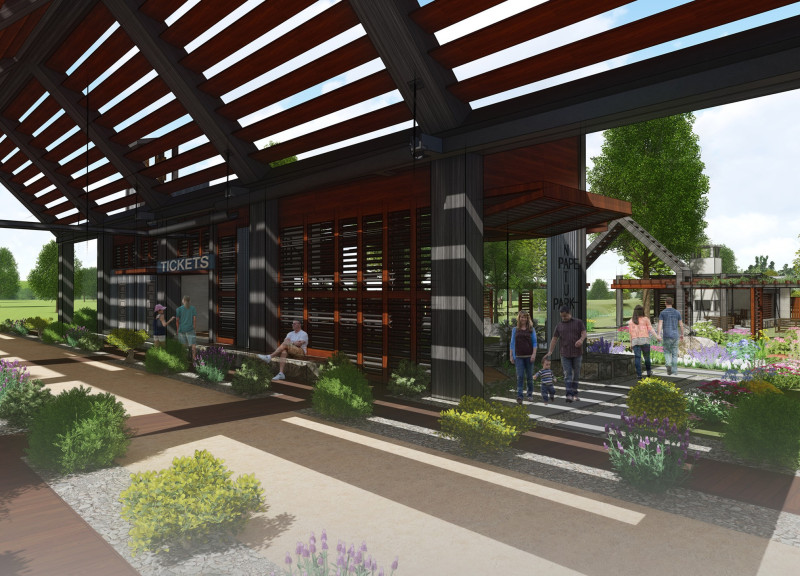5 key facts about this project
The architectural layout of the Gateway is thoughtfully conceived, promoting ease of access and allowing for a variety of visitor activities. It functions not only as a welcoming entrance but also as an educational space that informs guests about the environmental significance of the park. By integrating spaces for informational displays, community gatherings, and recreational activities, the design encapsulates a multidimensional approach that caters to different visitor needs while promoting environmental awareness.
At the heart of this project is its unique structural design, characterized by a primary entry structure reminiscent of traditional barns. This choice of form is significant, as it connects visitors to historical and regional architecture while maintaining a contemporary feel. The design features a five-bay configuration supported by a robust steel frame, ensuring both stability and aesthetic appeal. The sloping roof plays a dual role; it not only helps with rainwater collection but also optimizes light entry into the interior spaces, which is crucial for creating welcoming environments.
The materiality of the Gateway to Pape Nature Park further contributes to its identity. The project employs a range of materials including steel, wood, concrete, and glass. Steel forms the structural skeleton, optimizing strength without excessive weight. Wood elements, particularly timber, enhance warmth while reducing the building’s environmental footprint. Concrete is utilized for its durability, providing a long-lasting foundation for the various pathways and interactive spaces within the park. The thoughtful use of glass facilitates natural light penetration, reinforcing a seamless connection between the interior spaces and the surrounding nature.
One of the more innovative features of the project is its Sustainability Tower. This structure is designed to harness renewable energy sources such as wind and solar power, serving as a practical demonstration of sustainable design in action. This educational aspect is essential in raising awareness about renewable energy, making sustainability a lived experience for all visitors.
The landscaping surrounding the Gateway is equally essential to its design. Enhanced vegetation not only adds aesthetic value but also fosters biodiversity and creates natural habitats for local wildlife. This ecological sensitivity is critical in establishing the park as a space where nature and architecture coexist harmoniously.
The versatility of the space is an important aspect of its design approach. It caters to various community events, recreational activities, and educational programs, thus fostering a sense of belonging and stewardship among park visitors. Paths lead through the park, guiding visitors on a journey that invites exploration and engagement with nature.
By embodying the principles of sustainable design, the Gateway to Pape Nature Park represents a forward-thinking approach to architecture that prioritizes both community interaction and environmental stewardship. The unique integration of structural elements, material selection, and landscaping contributes to a cohesive experience that respects and celebrates the natural context.
To fully appreciate the intricate details of this architectural endeavor, it is encouraged for readers to explore the project presentation, including the architectural plans, sections, designs, and ideas. A deeper examination will reveal the thoughtfulness and care embedded within this significant project, illustrating the harmony between architecture and nature that the Gateway to Pape Nature Park epitomizes.


























